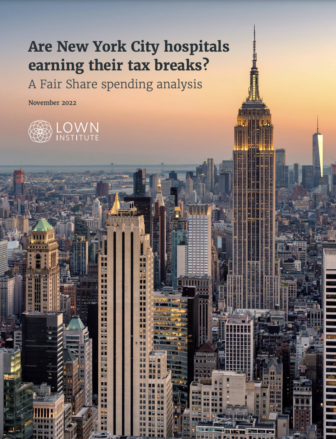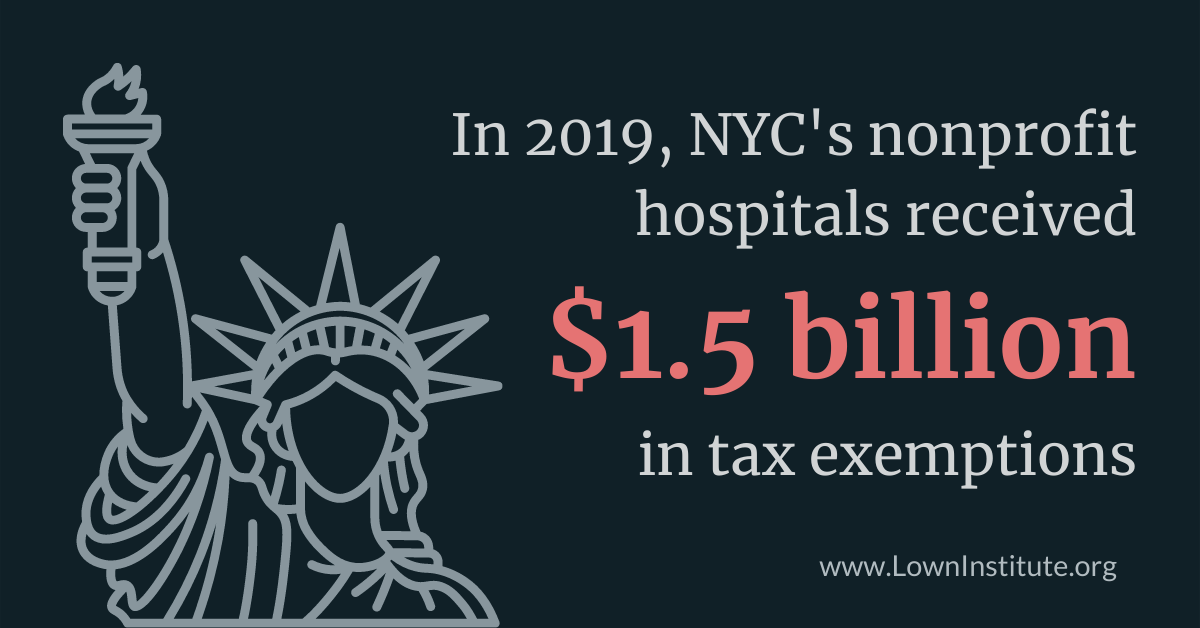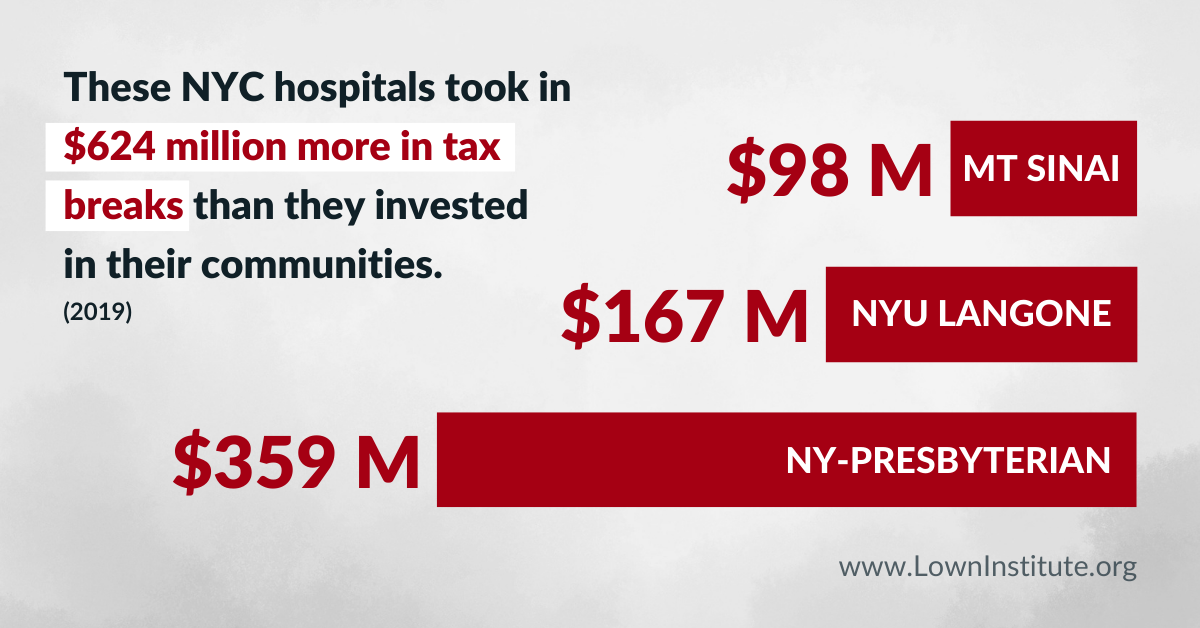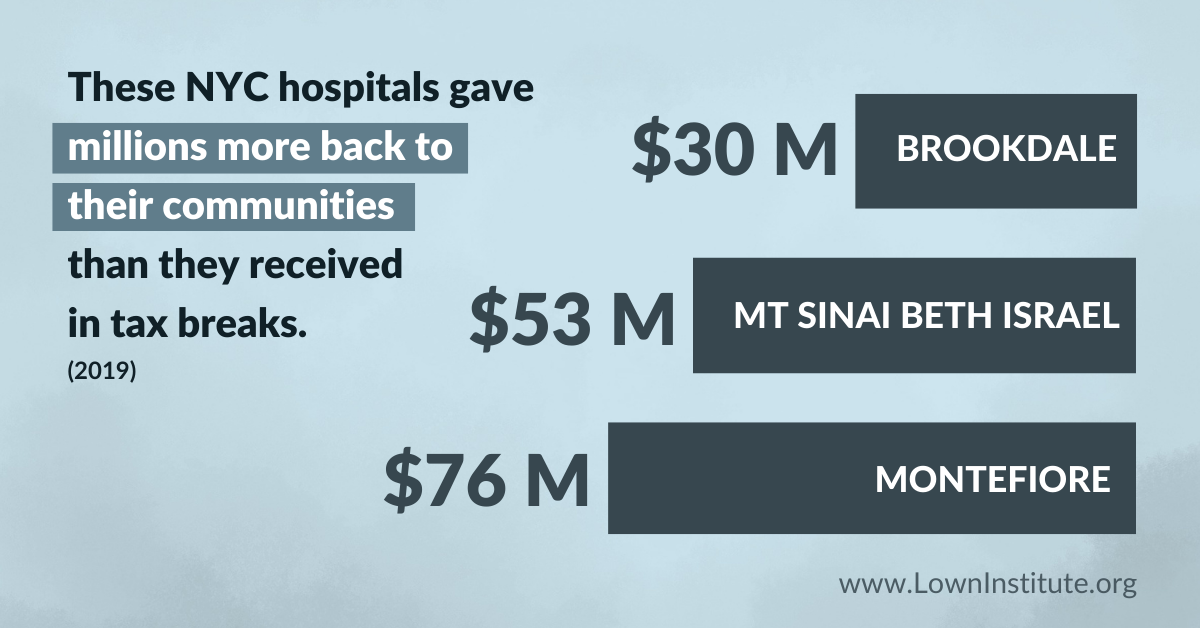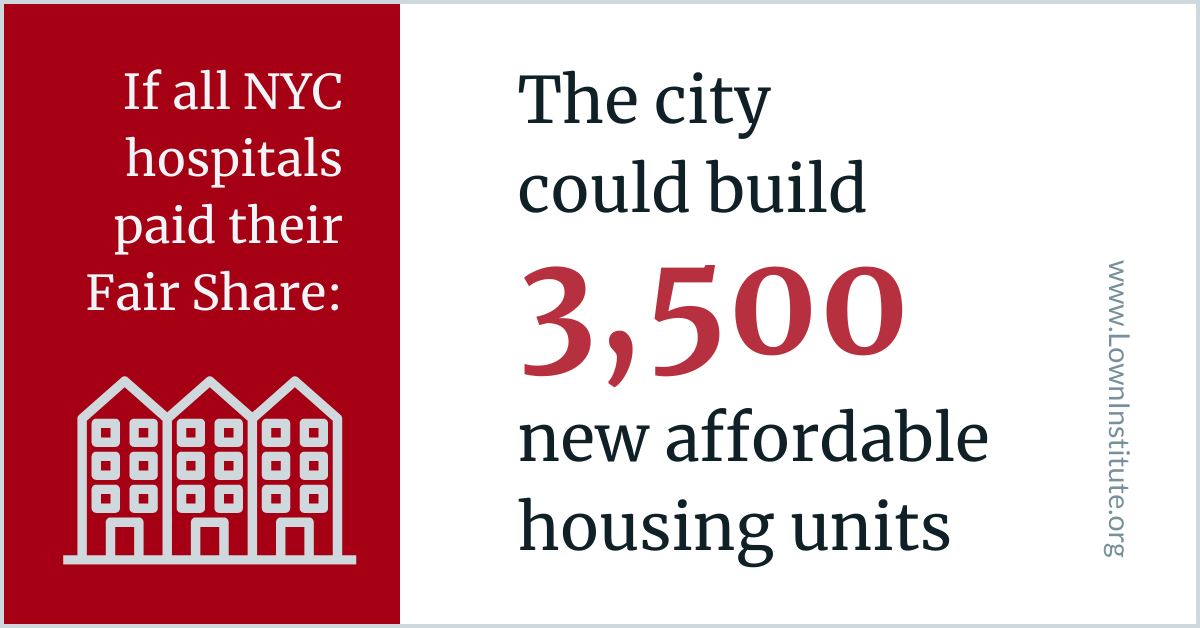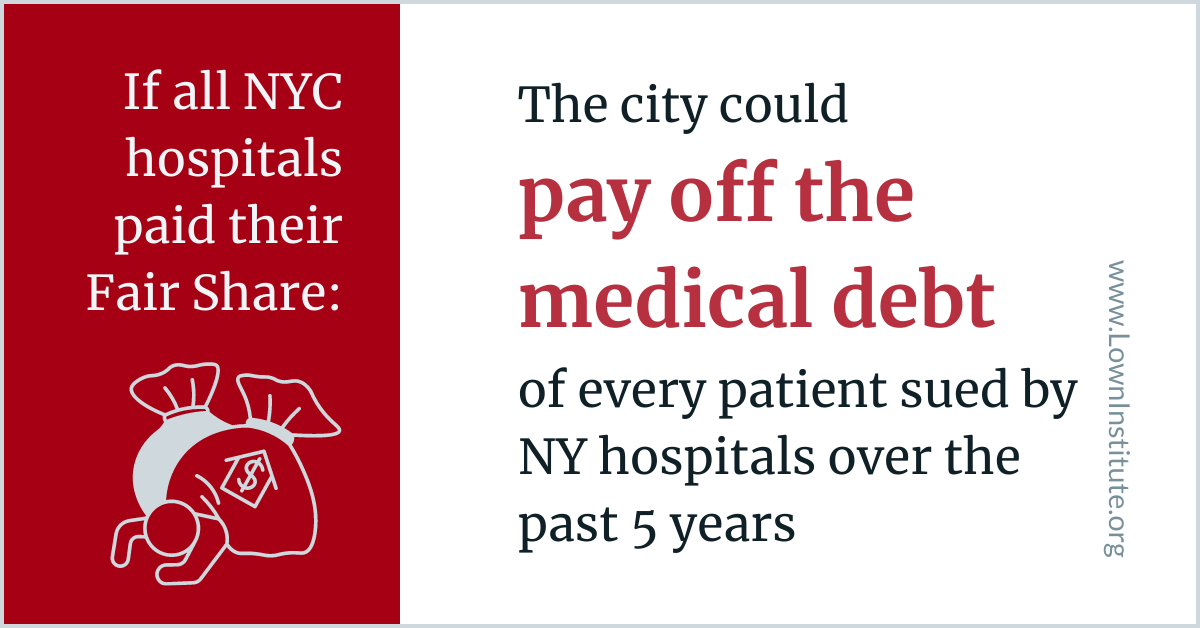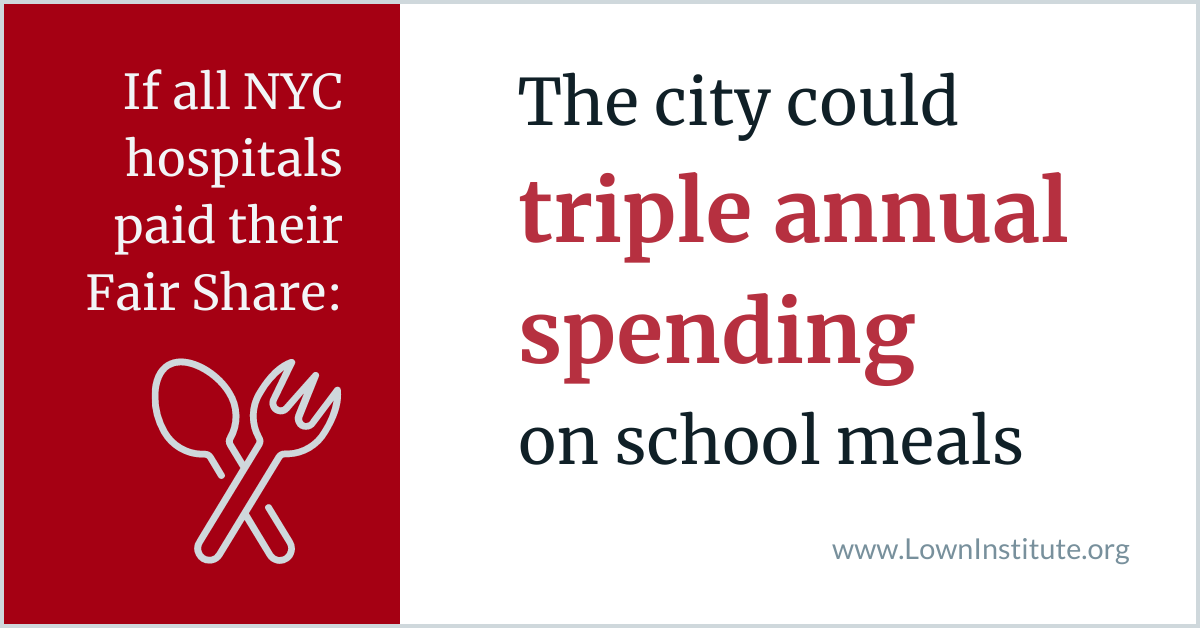Are NYC hospitals earning their tax breaks?
A new report examining the finances of nonprofit hospitals in New York City finds that some hospitals fall significantly short on expected community investments. The study includes 21 hospitals and finds that 9 have a Fair Share deficit—meaning that the value of their community investments fails to equal the value of their federal, state, and local tax breaks. (PRESS RELEASE)
Key takeaways
- Overall, New York City hospitals received $1.5 billion in tax breaks in 2019
- Out of twenty-one NYC hospitals, nine have a Fair Share deficit; the combined deficit totals $727 million.
- The three hospitals with the largest deficits—New York-Presbyterian, NYU Langone, and Mount Sinai—make up 85% of the city’s total deficit.
- The total NYC Fair Share deficit is enough to triple what the city spends on school meals annually, create thousands of new affordable housing units, or pay off the medical debt for every patient sued by a New York hospital over the past five years.
- Fair Share spending among NYC hospitals varied widely, ranging from a surplus of $76 million at Montefiore Medical Center to a deficit of $359 million at New York-Presbyterian Hospital.
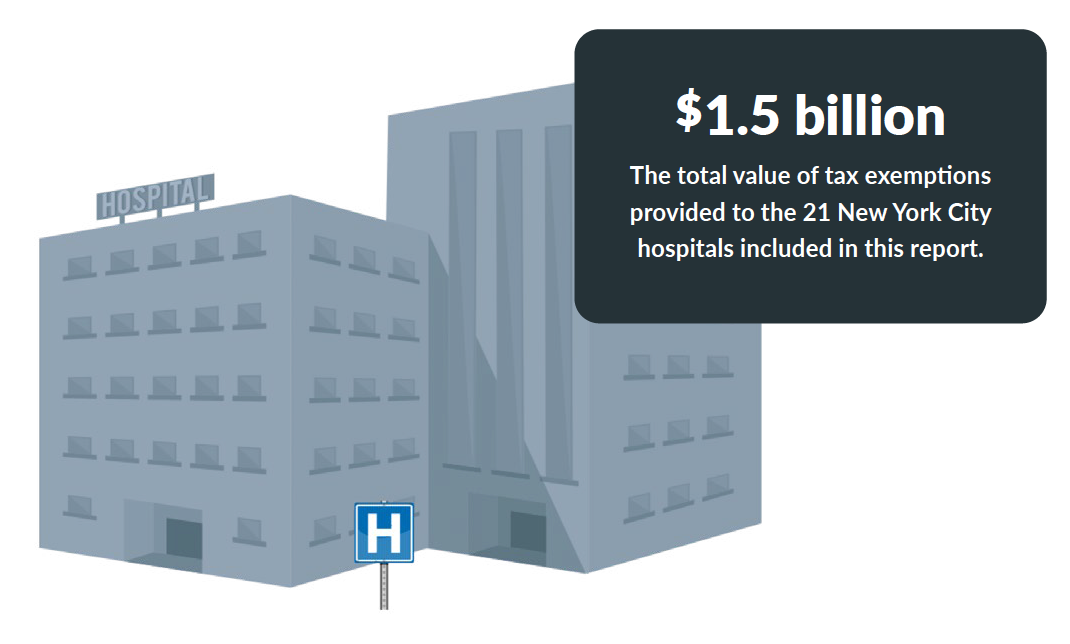
Fair Share spending is the difference between hospital spending on meaningful community investment and the value of their tax exemption. Hospitals that spend more on their communities than they receive in tax breaks have a Fair Share surplus; those that do not have a Fair Share deficit.
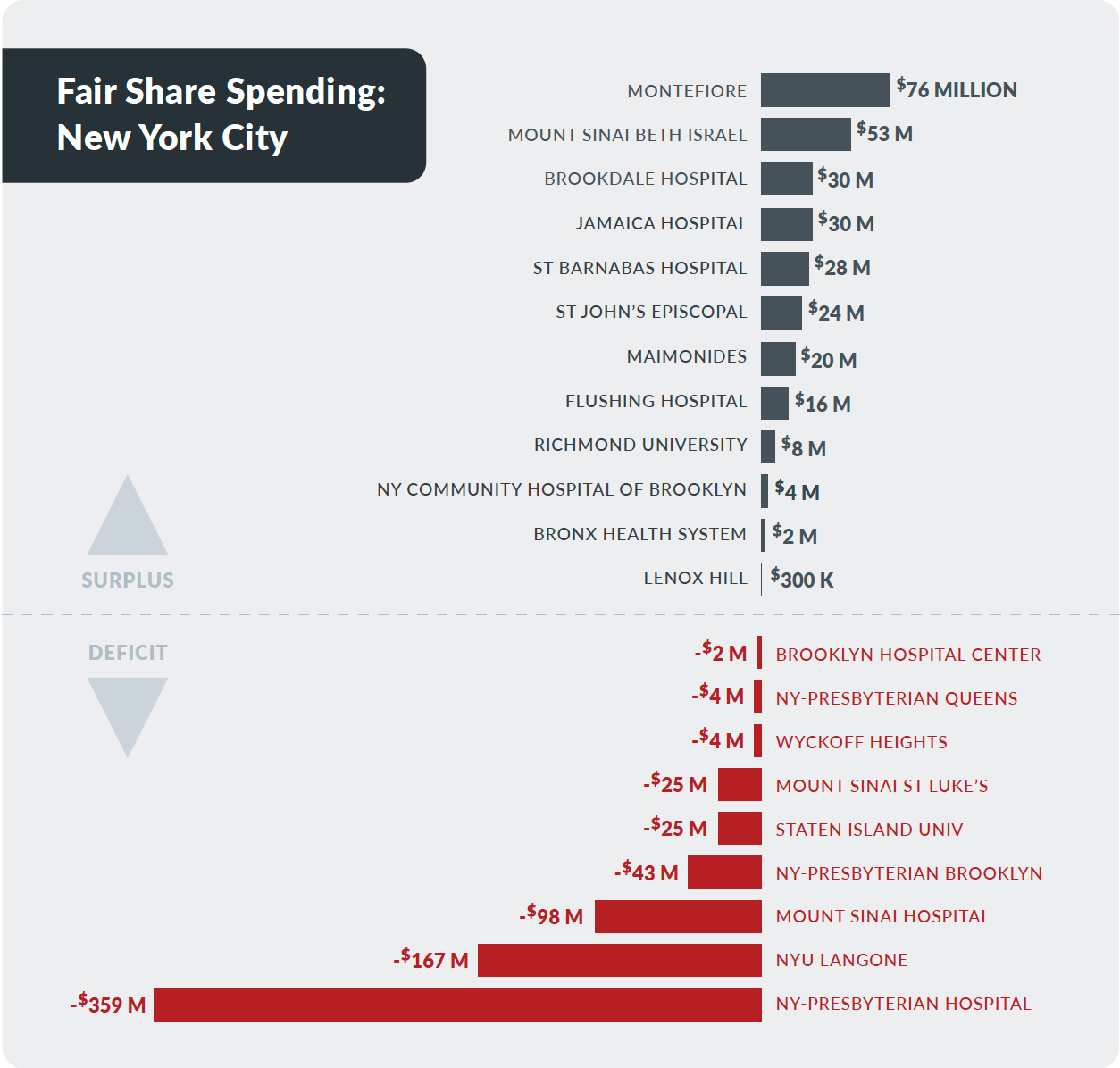
| Hospital name | Meaningful community investment | Tax exemption value | Fair Share spending |
|---|---|---|---|
| Montefiore Medical Center | $185.1 M | $109.1M | $76.0 M |
| Mount Sinai Beth Israel | $85.0 M | $32.0 M | $52.9 M |
| Brookdale Hospital Medical Center | $37.3 M | $7.2 M | $30.1 M |
| Jamaica Hospital Medical Center | $38.1 M | $8.1 M | $30.0 M |
| St Barnabas Hospital | $35.2 M | $6.9 M | $28.3 M |
| St John’s Episcopal Hospital at South Shore | $28.2 M | $4.4 M | $23.9 M |
| Maimonides Medical Center | $71.3 M | $51.2 M | $20.1 M |
| Flushing Hospital Medical Center | $26.1 M | $9.9 M | $16.2 M |
| Richmond University Medical Center | $17.7 M | $9.5 M | $8.2 M |
| New York Community Hospital of Brooklyn | $4.5 M | $282 K | $4.2 M |
| Bronx Health System | $28.0 M | $26.3 M | $1.7 M |
| Lenox Hill Hospital | $57.1 M | $56.8 M | $254 K |
| Brooklyn Hospital Center – Downtown Campus | $18.1 M | $19.7 M | -$1.6 M |
| NewYork-Presbyterian/Queens | $10.3 M | $14.0 M | -$3.7 M |
| Wyckoff Heights Medical Center | $8.6 M | $12.9 M | -$4.3 M |
| Mount Sinai St Luke’s Roosevelt Hospital | $39.8 M | $65 M | -$25.2 M |
| Staten Island University Hospital | $26.7 M | $52.2 M | -$25.5 M |
| NewYork-Presbyterian/Brooklyn Methodist Hospital | $27.6 M | $70.8 M | -$43.2 M |
| Mount Sinai Hospital | $128.8 M | $227 M | -$98.2 M |
| New York University Langone Hospitals | $95.1 M | $261.6 M | -$166.5 M |
| NewYork-Presbyterian Hospital | $133.7 M | $492.7 M | -$359.0 M |
| All NYC hospitals | $1.1 B | $1.5 B | -$435.2 M |
| All NYC hospitals with surplus | $613.5 M | $321.6 M | $292.0 M |
| All NYC hospitals with deficit | $488.9 M | $1.2 B | -$727.2 M |
Methodology
Fair Share spending is calculated by comparing the value of hospital tax exemptions to the amount spent on meaningful community investment. Only private nonprofit general hospitals with available IRS and CMS data were included in the analysis. For more a detailed methodology, see the full report.
Tax exemption value
The following categories are included in the tax exemption valuation:
- Federal corporate income tax exemption
- State corporate income tax exemption
- State & local sales tax exemption
- Property tax exemption
- Tax-exempt bonds
- Tax-exempt charitable donations
Data sources include CMS hospital cost reports, IRS Form 990, and property assessments from the NYC Department of Finance.
Meaningful community investment
Meaningful community investment includes the following categories of spending from IRS Form 990 Schedule H:
- Financial assistance
- Community health improvement activities
- Contributions to community groups
- Community building activities
- Subsidized healthcare services.
While Medicaid shortfall, health professionals training, and research are also reported on hospital tax forms, these are not included in the Fair Share spending analysis. Health policy experts have argued that these categories do not provide a direct and meaningful benefit to community health because they are not targeted for improving specific community health needs and/or hospitals are already reimbursed for this spending. For more on this topic, see our viewpoint in Stat (July 2022).
About
This report was commissioned for, and funded by, the 32BJ Labor Industry Cooperation Trust Fund. The 32BJ Labor Industry Cooperation Trust Fund was created for the purpose of containing health care costs, including hospital pricing, for the benefit of the 32BJ union members and the employers who contribute to the Trust Fund in New York City and surrounding areas.
Media contact: Aaron Toleos, vice president of communications for the Lown Institute, atoleos@lowninstitute.org.

